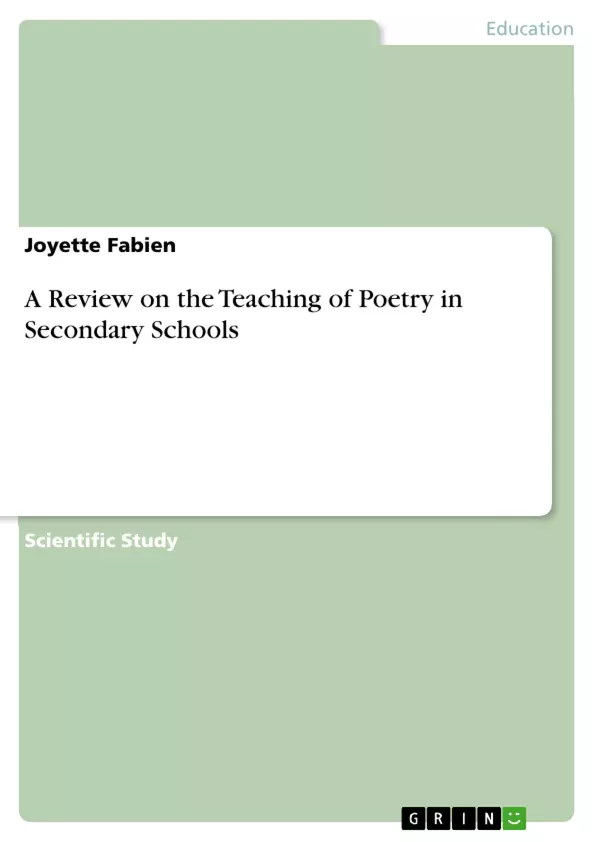This review attempts to examine closely some of the methods that have been used in the teaching of poetry in secondary schools up to recent times and the suggestions that have been made to improve the status of poetry in schools and to help students to enjoy poetry.
Indeed, poetry is one of the most creative forms of expression. It is language at its most meaningful, language carefully shaped and crafted into its most perfect form. Poetry encompasses all forms of human experience, from the simplest to the most intimate and complex. It speaks at once to the intellectual and the “ordinary” man, the adult and the child. To imagine that poetry deals only with great experiences and great people is to greatly undervalue poetry.
The Encyclopedia of Poetry and Poetics (1965, p. 159) states that “poetry should matter and be felt to matter, in the community” and that its social function is no less important than its other functions. Nevertheless, critics of poetry seem to be united in the opinion that poetry is unpopular among adults as well as high school students worldwide. It is a fact that the majority of high school students are either indifferent or hostile to poetry. Dias and Hayhoe (1988 p.4) quote Greeves (1988) as saying that “Poetry has become so rare in schools that it ought to be put on the endangered list.”
Table of Contents
- INTRODUCTION
- An Examination of Methods Used in the Teaching of Poetry in Secondary Schools.
- Suggestions for New Approaches to Improve the Status of Poetry in Schools
- The Importance of Reading and Writing Poetry in the Classroom
- CONCLUSION
Objectives and Key Themes
This review examines the methods used in teaching poetry in secondary schools, focusing on the challenges of engaging students with this art form. The paper explores historical approaches, identifies their shortcomings, and proposes alternative strategies to improve poetry's status in the classroom and cultivate students' appreciation for it.
- The challenges of teaching poetry in secondary schools
- The inadequacy of traditional teaching methods
- The importance of fostering student engagement with poetry
- The role of poetry in developing critical thinking skills
- The potential of creative writing to enhance understanding and appreciation of poetry
Chapter Summaries
The first chapter delves into the methods traditionally employed in teaching poetry, highlighting their limitations. The introduction-explanation-question format is critiqued for its passivity and lack of student involvement. The practice of paraphrasing is condemned for its damaging effect on the poem's integrity. The author argues that these methods fail to engage students and may even foster negative attitudes towards poetry.
Keywords
Poetry teaching, secondary education, student engagement, traditional methods, creative writing, critical thinking, appreciation of poetry, poetry in the classroom.
- Citation du texte
- Joyette Fabien (Auteur), 1990, A Review on the Teaching of Poetry in Secondary Schools, Munich, GRIN Verlag, https://www.grin.com/document/320363



